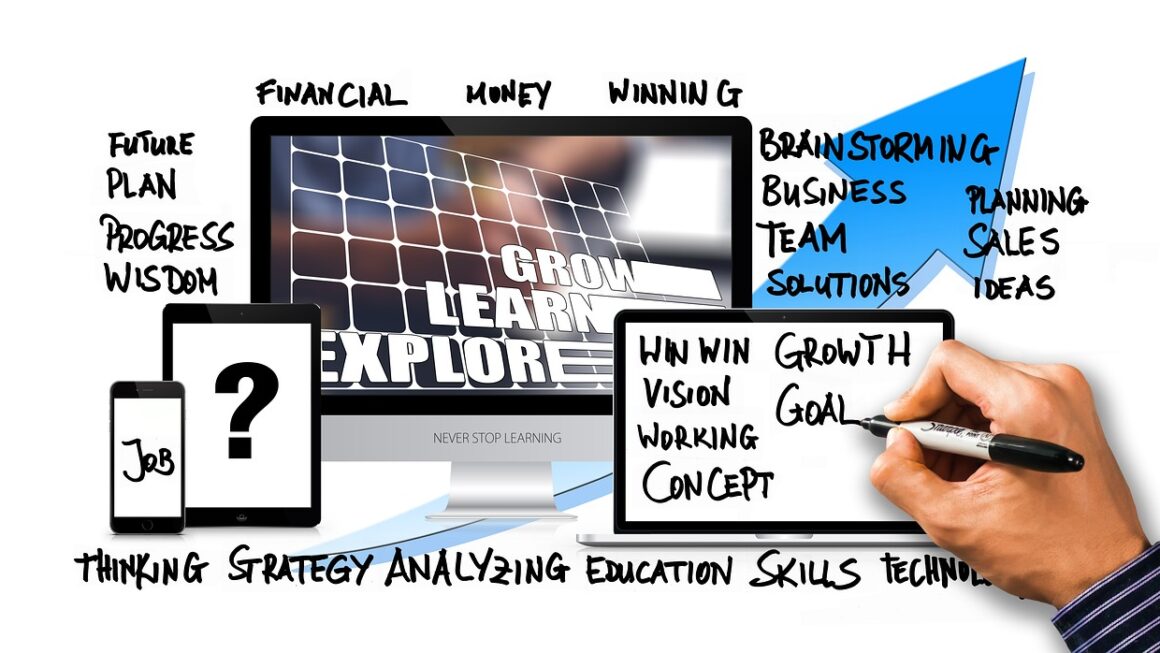The gig economy is transforming how we work and earn, offering unprecedented flexibility and opportunities for individuals and businesses alike. From freelance writing and graphic design to ride-sharing and delivery services, the gig economy encompasses a wide range of short-term, contract-based jobs. This surge in independent work is reshaping traditional employment models and creating a more dynamic and agile workforce. Let’s explore the intricacies of the gig economy, its benefits, challenges, and future trends.
What is the Gig Economy?
The gig economy, at its core, represents a labor market characterized by short-term contracts or freelance work, as opposed to permanent jobs. This system relies on independent workers who offer their services on a per-gig or project basis, often connecting with clients through online platforms and marketplaces. It’s a growing trend that’s significantly changing the landscape of traditional employment.
Key Characteristics of the Gig Economy
- Flexibility: Workers have the freedom to choose their projects, set their hours, and work from anywhere.
- Independence: Gig workers operate as independent contractors, managing their own taxes and benefits.
- Technology-Driven: Online platforms and apps facilitate connections between gig workers and clients.
- Project-Based: Work is typically assigned on a per-project or short-term contract basis.
- Diverse Range of Skills: The gig economy caters to a wide variety of skills and expertise, from creative fields to technical roles.
Examples of Gig Economy Jobs
- Freelance Writing & Editing: Creating content for websites, blogs, and marketing materials.
- Graphic Design: Designing logos, websites, and marketing materials.
- Web Development: Building and maintaining websites and web applications.
- Ride-Sharing: Providing transportation services through platforms like Uber and Lyft.
- Delivery Services: Delivering food, groceries, and packages through platforms like DoorDash and Instacart.
- Virtual Assistants: Providing administrative, technical, or creative assistance to clients remotely.
Benefits of Participating in the Gig Economy
The gig economy presents numerous advantages for both workers and businesses, contributing to its rapid growth and widespread adoption. Understanding these benefits is crucial for making informed decisions about participating in this evolving work landscape.
Benefits for Workers
- Autonomy: Gig workers have greater control over their schedules and work environments.
- Flexibility: They can choose when, where, and how much they work, allowing for better work-life balance.
- Diversified Income: Gig workers can work on multiple projects and diversify their income streams.
- Skill Development: They can gain experience in various industries and develop new skills.
- Increased Earning Potential: Depending on their skills and experience, gig workers can potentially earn more than in traditional employment.
- Work-Life Balance: The flexibility allows individuals to pursue personal interests or manage family responsibilities more effectively.
Benefits for Businesses
- Access to Specialized Skills: Businesses can tap into a global pool of talent and access specialized skills without the cost of hiring full-time employees.
- Cost Savings: They can save on salaries, benefits, and overhead costs.
- Increased Agility: Businesses can quickly scale their workforce up or down based on project needs.
- Improved Efficiency: Gig workers are often highly motivated and results-oriented.
- Reduced Risk: Businesses can avoid long-term commitments and reduce the risk associated with hiring full-time employees.
- Faster Project Completion: Access to a flexible workforce can expedite project timelines and improve overall efficiency.
Challenges and Considerations
While the gig economy offers numerous advantages, it also presents several challenges and considerations that both workers and businesses must address. Being aware of these issues is essential for navigating the gig economy successfully.
Challenges for Workers
- Income Instability: Income can fluctuate depending on the availability of gigs and project demand.
- Lack of Benefits: Gig workers typically do not receive employer-sponsored benefits such as health insurance, retirement plans, and paid time off.
- Self-Employment Taxes: They are responsible for paying self-employment taxes, which can be higher than employee taxes.
- Administrative Burden: Gig workers must manage their own finances, taxes, and insurance.
- Competition: The gig economy can be highly competitive, with many workers vying for the same projects.
- Isolation: Working independently can lead to feelings of isolation and lack of social interaction.
Challenges for Businesses
- Managing Remote Workers: Coordinating and managing a distributed workforce can be challenging.
- Ensuring Quality Control: Maintaining consistent quality across different gig workers can be difficult.
- Compliance Issues: Businesses must comply with labor laws and regulations regarding independent contractors.
- Intellectual Property Protection: Protecting intellectual property and confidential information can be a concern.
- Communication Barriers: Communicating effectively with remote workers can be challenging.
- Dependence on Platforms: Reliance on gig economy platforms can lead to increased costs and reduced control.
Tips for Overcoming Challenges
- For Workers: Budget wisely, save for taxes and benefits, network with other gig workers, and continuously develop your skills.
- For Businesses: Establish clear communication channels, provide detailed project briefs, use project management tools, and offer competitive rates.
The Future of the Gig Economy
The gig economy is poised to continue its rapid growth in the coming years, driven by technological advancements, changing workforce preferences, and evolving business needs. Several trends are shaping the future of this dynamic labor market.
Key Trends Shaping the Gig Economy
- Increased Automation: Automation and AI are likely to automate some gig tasks, but also create new opportunities for skilled gig workers.
- Growing Demand for Specialized Skills: The demand for specialized skills in areas such as data science, cybersecurity, and artificial intelligence is expected to increase.
- Rise of Niche Platforms: Niche platforms that cater to specific industries or skill sets are gaining popularity. For example, a platform focused solely on freelance legal services.
- Emphasis on Worker Rights and Protections: There’s growing pressure to provide gig workers with greater rights and protections, such as access to benefits and fair wages.
- Integration with Traditional Employment: The boundaries between traditional employment and gig work are becoming increasingly blurred, with some companies offering hybrid models.
- Global Expansion: The gig economy is expanding globally, connecting workers and businesses across borders.
Predictions and Projections
- Continued Growth: The gig economy is projected to continue growing at a rapid pace, with an increasing number of workers participating in freelance and contract-based work.
- Increased Competition: The competition for gigs is expected to intensify, requiring workers to differentiate themselves through skills, experience, and reputation.
- More Regulation: Governments are likely to introduce new regulations to address issues such as worker classification, benefits, and taxes.
Getting Started in the Gig Economy
For those looking to enter the gig economy, it’s crucial to understand the steps involved in getting started and building a successful freelance career. Whether you’re a worker or a business, proper preparation is key.
Steps for Workers
- Identify Your Skills and Interests: Determine what skills you have that are in demand and what types of projects you enjoy working on.
- Create a Portfolio: Showcase your best work and demonstrate your skills and expertise.
- Choose a Platform: Select a platform that aligns with your skills and target market, such as Upwork, Fiverr, or LinkedIn.
- Set Competitive Rates: Research industry standards and set rates that reflect your skills and experience.
- Market Yourself: Promote your services through social media, networking, and online advertising.
- Provide Excellent Service: Deliver high-quality work, communicate effectively with clients, and build a positive reputation.
Steps for Businesses
- Define Your Needs: Clearly define the scope of the project and the skills required.
- Choose a Platform: Select a platform that allows you to find qualified gig workers with the specific skills you need.
- Write a Detailed Project Brief: Provide clear instructions, deadlines, and expectations for the project.
- Screen Candidates: Review candidate profiles, portfolios, and ratings to find the best fit for your project.
- Communicate Effectively: Maintain open communication with gig workers throughout the project.
- Provide Feedback: Give constructive feedback to help gig workers improve their performance.
Conclusion
The gig economy is reshaping the future of work, offering both opportunities and challenges for workers and businesses. By understanding the key characteristics, benefits, and considerations of this evolving labor market, individuals and organizations can make informed decisions and navigate the gig economy successfully. As technology continues to advance and workforce preferences evolve, the gig economy is likely to become an even more integral part of the global economy. Embrace the flexibility, adapt to the challenges, and prepare for a future where independent work is the norm.




